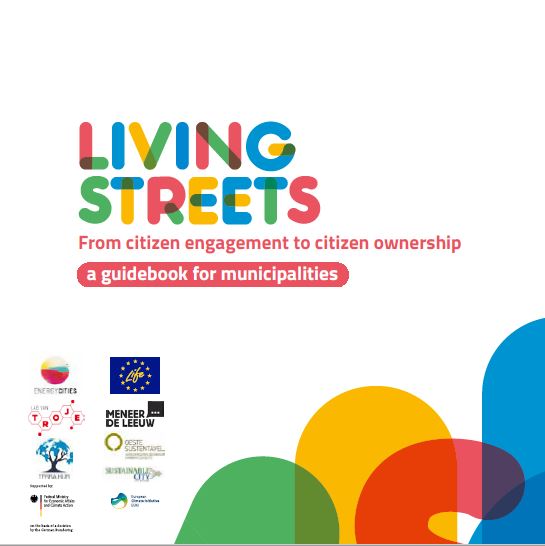Living Streets
The project is completed. It increased capacities of cities and networks in Greece, Croatia, and Portugal to engage citizens on energy and climate issues. By blocking streets for motorized traffic, Living Streets turned streets into social hubs and used the space to bring citizens and local climate projects together.
Awareness Climate-Neutral Mobility

Project info
Croatia, Greece, Portugal
11/19 - 04/22
-
299,475.00 €
Contact info
Kinga Kovacs
- OesteSustentável- Regional Agency for Energy of the Western region of Portugal
- Sustainable City - City Network for Sustainable Development and Cyclical Economy
- Terra Hub
Project
“Living Streets” followed a twofold goal: first, to enable networks and cities on citizen engagement in climate and energy issues, connecting actors from Greece, Croatia, and Portugal. Second, to impact local spatial planning and mobility policies through feedback gathered from citizens at “living streets” sites: selected streets that are closed to motorized traffic for certain time periods over 1-2 months, where citizens can try-out a car-free lifestyle and be in touch with local climate and energy projects.

In total, Living Streets were organized in 8 new cities in 3 countries: Corinth (Greece), Elliniko-Argyrou-poli (Greece), Faro (Portugal), Križevci (Croatia), Labin (Croatia); Óbidos (Portugal), Poreč (Croatia) and Torres Vedras (Portugal). The establishment of these Living Streets involved several municipal authorities as well as residents and local associations. The co-design aspect of Living Streets was new to several of these communities.
Living Streets also prompted communities to rethink urban planning and mobility, as well as social cohesion. These 8 examples were presented to a wider audience in national webinars or workshops and in a final workshop held in Faro in November 2021. All of these 8 municipalities are planning the second edition of their Living Streets.
Background
Currently, streets constitute about 20 to 30 per cent of any metropolitan area. While they gradually became designated to cars, streets should rather be perceived as municipalities’ essential social and economic hubs, where people come together to form a living community. Living Streets realized the vision of an environment where streets are for people, not for cars. By doing so, the project also highlighted shortcomings of traditional urban planning policies, where mobility policies are centered around cars, streets are designed in hierarchical top-to-bottom processes that disregard citizens’ experience, and individual planning departments do not cooperate with each other. Importantly, by creating a space where citizens can articulate their opinion on projects, Living Streets also filled a capacity gap that has been noted to be prevalent in all 3 target countries: local authorities have neither the know-how nor the tools to engage citizens in planning and decision-making. The lessons learnt are fed into new municipal policies on how to facilitate local bottom-up initiatives in urban planning and sustainable mobility.
State of Results
- 8 cities in Portugal, Croatia, and Greece tried out 2021 Living Streets, an initiative that brings together elected officials, public servants, and citizens to rethink mobility and urban planning.
- 335 representatives from cities in Portugal, Croatia and Greece learned about the Living Streets concept and received training on citizen participation through 15 workshops and webinars.
- 25 mayors or city councils from cities in Portugal, Croatia and Greece expressed their interest by signing an expression of interest to replicate the Living Streets initiative after the project’s completion.
- Knowledge and expertise from the implementation of Living Streets in the municipalities of Corinth and Elliniko-Argyroupoli (Greece) was incorporated into the development of the sustainable urban mobility plans of the municipalities of Argos-Mycenae and Aigialeia.
- The Municipality of Faro intended to issue a call for application at the end of the project so that neighbourhoods and streets could submit their projects for another Living Streets.
- Many of the temporary measures implemented in Óbidos became permanent measures, with effective changes in the urban and sustainable mobility plan of the locality.
- The Torres Vedras City Council decided to invest in basic street infrastructure and the installation of bike stations, and to ban traffic and parking. Many of these measures have been incorporated into the Climate Change Action Plan (SECAP) developed by the municipality.
Last update: July 2024

